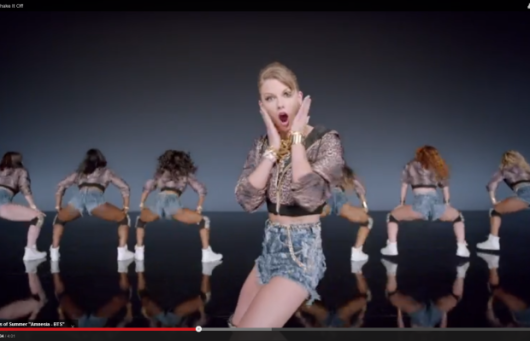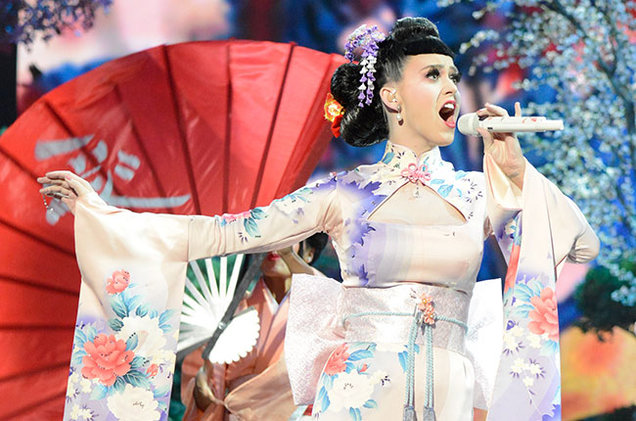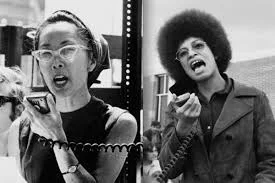The Bears Ears: Cultural Appropriation in the Outdoor Industry and Why “Public” Lands Are Not Public
Cover photo courtesy of Utah Business Magazine
The fight to keep the Bears Ears a National Monument has the outdoor community clamoring to speak on why this place is “spiritual” to them, that it summons “out of body experiences and how their athleticism is “ritualistic.” The erasure of Native American culture in popular outdoor media is a part of the institutionalized racism and violence towards Native American communities. The outdoor community is perpetuating the oppression of Native American communities through cultural appropriation[1]; by climbing on sacred monuments for recreation or paid work, white-washing or completely erasing the history of the lands, and stealing elements of Native American culture for profit. In the outdoor community we see cultural appropriation in written accounts like Morgan Sjogren’s, “Run to the Sunrise,” which is complete with a photo of Sjogren posing with a feather in her hair, a sacred ritual for many Native tribes.
Cultural appropriation happens when members of a dominant culture adopt or use the elements of a marginalized culture without acknowledgement or permission, such that it distorts or completely loses the original meaning. [2] No one explains in better in the context of current events like 16-year-old Amandla Stenberg. In her essay, “Don’t Mess Up When You Dress Up: Cultural Appropriation and Costumes,” Kjerstin Johnson writes that cultural appropriation is when “…someone who does not experience that oppression is able to ‘play,’ temporarily, an ‘exotic’ other, without experiencing any of the daily discriminations faced by other cultures.” Examples in popular culture include Katy Perry’s performance at the American Music Awards when she fluttered around the stage in yellow-face as a Geisha, when white people participate in Cinco de Drinko or Hawaiian Aloha themed cultural parties, or the reigning fool of all appropriative events: Coachella, where you’ll find people donning war bonnets.
Katy Perry and other white people exercise their white privilege during these events because they co-opt parts of a culture without acknowledging their complicities in oppressing that very same culture. Often they receive praise, or are seen as fashionable, funny, or cute. Appropriation functions in harmful ways as it reinforces stereotypes and erases the history of the culture. Feathers and war bonnets have to be earned in some Native communities and hold deep significance. Posing with a feather in her hair, Sjogren stirs up tired stereotypes and in doing so she inadvertently debases the very culture she is trying to advocate for. Tristan Picotte, Cheyenne River Sioux, 2014 Young Native Writers Essay Contest winner, writes that Eagle feathers, “…commemorated bravery, determination, cunning, skill, and even marked moments of life such as marriage, and birth. A feather was not simply a thing to be owned, it was an honor to be earned.”[3]
In her essay, Sjogren aims to advocate for the Bears Ears by speaking about her time spent in the area trail running and overcoming personal challenges. Her aim misses the mark, however, by appropriating Native American running rituals by drawing parallels to her sponsored running career and failing to recognize how she is complicit in the oppression of Native Americans. The by-line of the piece reads, “One runner’s search for adventure and a fresh start in our newest – and now at-risk – national monument.” Using the terms “adventure,” and “fresh start,” allude to Manifest Destiny – the idea that settlers not only could, but were destined to explore and expand U.S. borders on land that was already home to many communities.
Instead of recognizing that the monument is not “new” or the fact that western settlement came with Native American removal and war with Mexico, Sjogren reduces the significance of the Bears Ears to an “unknown land” by talking about her own “fresh start.” Sjogren cannot equate the struggles of camping in her car, her divorce, and running to the endured struggles of the Navajo people due to the oppression of Unites States colonialism. In what Lisa Delpit calls ‘the culture of power,’ “white people can silence others without intending to or even being aware of it.”[4] Though she intended to advocate for the place and highlight the Bears Ears and Navajo culture, Sjogren actually did nothing to dismantle her participation in the oppression that keeps Native American cultural sites threatened and communities at-risk.
There is a pervasive anxiety among white people not wanting to acknowledge that any Native communities existed prior to their own nor that they still exist today. If the outdoor community wants to advocate for “public” lands then they must first recognize that they benefit from the colonization of Indigenous lands by the United States government. Sjorgen views the land as a place for recreation, as a testing ground to push her limits, as if the land is indeed “public.” But the land as “public” is problematic because the development of public lands came with the forced removal and genocide of Native Americans that continues to this day. Conversations about public lands need to account for who has access to recreation, which according to outdoor advertisements and representations at most outdoor film festivals is mostly white people.
Bears Ears is home to more than 100,000 Native American archaeological and cultural sites, which have been subjected to ongoing looting, grave robbing, vandalism and destruction. These criminal acts threaten the preservation of Native American culture and history. If Sjogren is trying to get people to care about the Bears Ears, it would be wise to speak of the Native Americans who live there, acknowledge them as sovereign and contemporary communities – not as relics of the past. Sjogren ultimately takes the part of Navajo culture that she likes, the part about running, and leaves out the rest. When writing anything on another’s culture it is important to do the hard work of taking the time to account for the history and context of which you are writing about.
In a New York Times article titled, “Indians Proudly Revive a Tradition of Running,”[5] William E. Channing, Wings of America president, is quoted as saying, “Running has its roots in the spiritual tradition. Running increases pride, self-esteem, cultural identity. It brings people together in a healthy lifestyle.” Historically, Native Americans ran as a means for trade, communication, and connection between Earth and Sky. Today, organizations like Wings of America, encourage Native American youth and adults to get active and combat health risks like Type II diabetes.
William Channing and board of directors for Wings of America. Photo courtesy of Wings of America.
This claim to the Navajo’s running ritual is ultimately an offensive act. Claiming an aspect of another culture is a kind of entitlement that stems from a white, European settler mindset. Often outdoor writing speaks about exploration, but in truth, there has never been a frontier to explore. Patrick Wolf describes in, “Settler Colonialism Then and Now,” (his published conversation with J. Kehaulani Kauanui), that “European colonialism…applies coerced and/or enslaved labor to the land which has been expropriated, which has been taken away, which has been stolen from Indigenous people…invasion generally is a violent process because nobody gives up their land voluntarily…People do not give up places where their old people are buried, where they have been born and bred for generations, where they’ve lived, where their gods are. They do not give that up easily, so it’s invariably a violent process.”[6]
Eric Descheenie, Navajo co-chair of the Bears Ears Coalition along with Alfred Lomaquahu, Hopi, said about the Bears Ears proposal back in October 2015 that, “This is a day about healing. This is a day about a people’s movement, a humanistic endeavor, and this is about collaborative management. It comes very much from the heart of Indian country,” reports Anne Minard of Indian Country Today.[7] Narratives about protecting public lands need to focus on the spiritual and cultural significance of the land to the Indigenous communities living there, not on the recreation of white people. The outdoor community needs to listen to Native people talk about their experiences and hear their thoughts on their own solutions towards the preservation of the land. Instead of talking about how great it is to “explore,” we can spend time learning about the history and culture of Native American communities. Furthermore, take the time to learn which tribes are hosting you on their land, what sites are sacred regardless of whether or not they are protected as national monuments, and learn how you can participate in dismantling the outdoor community’s complicity in oppression.
Amanda Stenberg Schools Everyone on Cultural Appropriation!
[1] https://www.youtube.com/watch?v=0b33twnpqvE
[2] https://www.quora.com/What-is-cultural-appropriation-and-why-do-some-people-see-it-as-such-a-big-problem
[3] https://indiancountrymedianetwork.com/history/events/essay-winner-explains-the-sacredness-of-earning-eagle-feathers/
[4] https://www.cpt.org/files/Undoing Racism - Understanding White Privilege - Kendall.pdf
[5] http://www.nytimes.com/1998/08/02/us/indians-proudly-revive-a-tradition-of-running.html
[6]https://nycstandswithstandingrock.files.wordpress.com/2016/10/kauanui-wolfe-2012.pdf
[7] https://indiancountrymedianetwork.com/history/sacred-places/tribes-ask-president-obama-to-designate-bears-ears-as-national-monument/)









